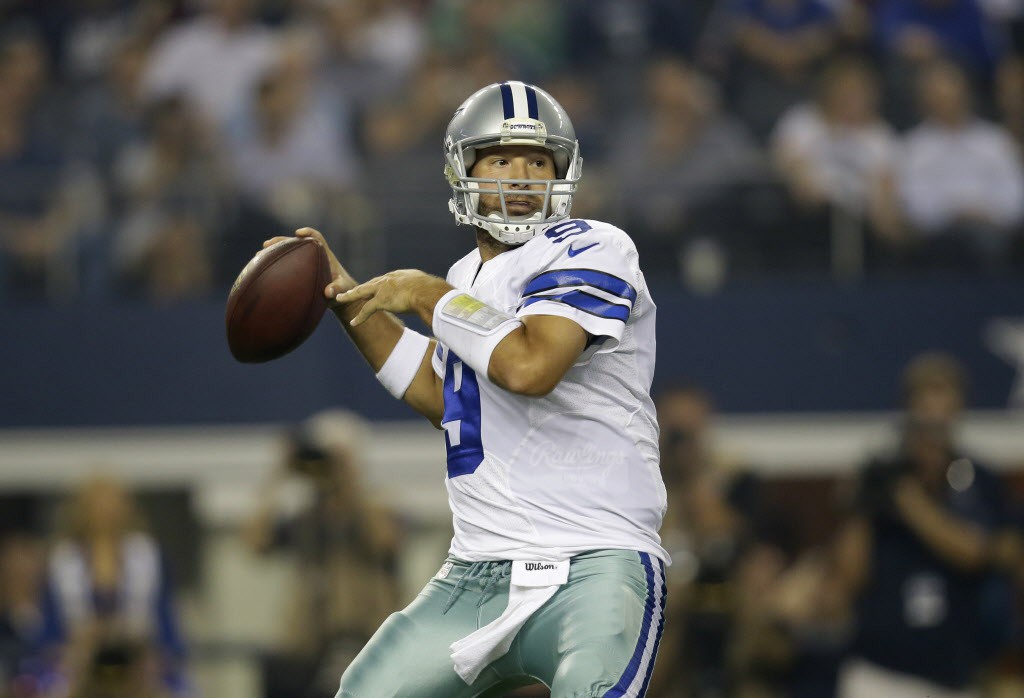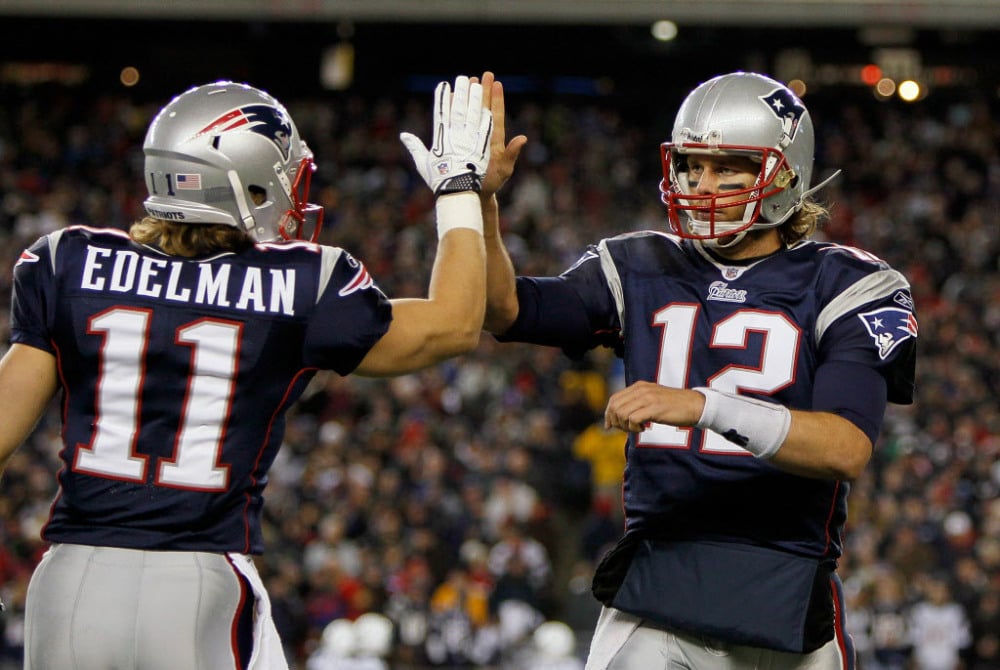There are a lot of ways that daily fantasy football can be different from NFL football; we don’t always need to know which players are good in real life to succeed in the fantasy realm. However, I think there’s value in understanding players and the NFL game in general, as exploiting inefficiencies in the NFL (which are present all over the place) can lead to fantasy success.
I used to cover the Dallas Cowboys, and I feel like I had a pretty good grasp on what the team did well and poorly such that it gave me a pretty big advantage in regards to their players in daily fantasy football. I know that Jason Garrett has historically come out very conservatively on the road, for example, which aids in weekly player projections.
I also like to look at head coaches’ aggressiveness on fourth downs; those coaches who are risk-averse end up costing their offenses valuable fantasy points. Like I said, the inefficiencies are plentiful, but one of the biggest is an ultra-conservative play-calling philosophy after gaining a lead. How many times do we see an offense that has a three-point lead in the fourth quarter just completely “sit on their lead” by running the ball way too much, then lose the game because they were forced to punt it away?
Hint: It’s all the fucking time.
When a team has a late lead, they should indeed be more conservative with their play-calling. The degree of such a conservative philosophy should depend on the score, and unless you’re up by multiple touchdowns, the correct move isn’t a run-the-ball-on-first-and-second-down-and-then-attempt-a-short-pass-on-third-down-short-of-the-first-down strategy that we see so often. For the most part, unless time is ticking away near the end of the game, offenses with very small leads should run very close to their normal offense.
But outside of a few exceptions, they don’t. And it has fantasy football ramifications.
Fourth-Quarter Play-Calling and Stats
I knew we’d see some dramatic differences in fourth-quarter play-calling based on the score, but what I found is pretty shocking. Here’s a look at the difference in passing attempts and YPA for offenses that are either leading by 14 or trailing by 14 in the fourth quarter.

Note that, although there’s a difference in efficiency, it’s not that extreme. This is par for the course with quarterbacks; the difference between the best and worst in terms of efficiency isn’t monumental. Meanwhile, the difference in passing attempts can be substantial, especially on the level of an individual game or quarter.
Overall, offenses down by 14 in the fourth quarter rack up around nine more passing attempts than their winning counterparts. That leads to an average of 73 fourth-quarter passing yards for the quarterback of a team down by two touchdowns or more in the final frame, compared to just 21 passing yards for quarterbacks on the team with the lead. That’s a substantial difference—around 3-3.5 fantasy points, depending on your scoring system.
And that’s just from yards alone. Here’s a peek at touchdowns/interceptions in the fourth quarter of 14-point games.

Teams that are trailing by 14 or more points throw way more interceptions, but they also toss a lot more touchdowns, too, and the scores more than make up for the picks. Quarterbacks on teams that are trailing by 14 points score an average of 1.30 fantasy points in the fourth quarter from their TD/INT totals. Quarterbacks on winning teams total just 0.66 fantasy points.
If we add it together, we’re looking at an additional four fantasy points for quarterback who are trailing big in the fourth quarter. That’s just from the passing stats, too; if you have a mobile quarterback, he’s more likely to rack up rushing yards on scrambles.
Having said all that, these results are somewhat surprising, but not a total shock since a 14-point lead is a big one that should dramatically alter play-calling. But what about in close games that are within one touchdown? Offenses with a small lead aren’t just dicking around by keeping the ball on the ground, right?

Even though it’s a smaller gap, teams down by less than a touchdown are throwing the ball more than twice as often as teams up by seven or less in the fourth quarter! With basically no difference in YPA, that equates to twice as many fourth-quarter passing yards, too.
And what about touchdowns/interceptions?

These gaps are smaller than in 14-point games, but still pretty large. The fact that offenses down by less than one score are throwing twice as many fourth-quarter touchdowns as those with the lead is pretty incredible. These numbers display why, given the choice between down by four points or up by four points in the fourth quarter, I’d actually choose trailing for my team in many situations (assuming they have the ball). NFL offenses are simply way, way too conservative when they have small leads, even late in games.
How to Benefit
It’s one thing to know that a team is going to post worse fourth-quarter passing stats if they have a fourth-quarter lead, but is it actionable? I think it’s at least worth a try with the Vegas lines. In most cases, Vegas is going to be correct more than us in their prognostication of game outcomes. Their lines can give us a really accurate representation of expected game flow.
Take this line, for example: PIT (-3) vs BAL – Over/Under 31 points
In this case, we can deduce a projected final score of 17-14—close and low-scoring. This is a situation we’d want to avoid with passers. One reason is of course the low over/under; at 31 total points, there’s not much meat on the fantasy bone. The other reason is the close spread; at just three points, we can’t be very confident that Pittsburgh will indeed be leading in the fourth quarter. There’s nothing actionable here.
Compare that to this game line: DEN (-10) @ DAL – Over/Under 64 points
In this case, the projected final score is 37-27—lots of potential scoring for both quarterbacks. Further, because the spread is high, we can be fairly confident that Denver will be leading in the fourth quarter, forcing Tony Romo to rack up more passing attempts. In this case, Romo is probably a good start because 1) the Cowboys would still be projected to score a lot of points and 2) Romo is likely to maximize his output with this sort of game script.
Note that this doesn’t at all make Romo a better play than Peyton Manning, clearly. But in daily fantasy football, everything comes at a price. Manning will almost always be a better play than Romo straight up, but that might not be the case when you consider their salaries. And if we have good reason to believe that Romo will be down in a game in which Dallas will still score a good number of points, that’s probably a situation we want to target; relative to his cost, the fact that Romo will be throwing the ball a lot in a high-scoring game could make him a better value than Manning.





